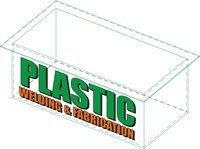
Innovative Solutions for
Containment Needs
Ensuring Environmental Regulations Compliance Since 2003
Plastic secondary containments play a critical role in preventing hazardous spills and leaks, thereby safeguarding the environment and maintaining regulatory compliance. These robust, corrosion-resistant systems are designed to fulfill the crucial task of confining hazardous materials, such as chemicals and oils, within a secondary barrier, ensuring that any potential leaks or spills are contained and do not pose a threat to the surroundings. Plastic secondary containments are crafted from durable materials, such as high-density polyethylene (HDPE) and polypropylene, offering exceptional resistance to chemicals and harsh environmental conditions. At Plastic Welding & Fabrication, Ltd., we specialize in fabricating custom-designed plastic secondary containments that meet the unique needs of our clients, providing reliable protection and peace of mind.
Onsite Installation Services
Plastic Welding & Fabrication, Ltd. is proud to offer comprehensive onsite installation services for our secondary containments, extending across the United States. Our team of highly skilled professionals ensures the seamless and efficient installation of secondary containment systems, meeting the unique needs of each client. With a focus on precision and quality, we guarantee that our secondary containment solutions are implemented to the highest standards, providing the utmost protection for the environment and facilities. From coast to coast, Plastic Welding & Fabrication, Ltd. is dedicated to delivering exceptional onsite installation services, solidifying our commitment to excellence in containment solutions.
Benefits of Secondary Containments
Secondary containment systems play a crucial role in safeguarding the environment from potential hazardous material leaks and spills. By providing an additional layer of protection, these systems help prevent pollutants from seeping into the surrounding soil and water sources, minimizing the risk of environmental contamination. In the event of a primary container failure, secondary containment acts as a vital barrier, containing the spill and allowing for prompt cleanup and remediation. This proactive approach not only reduces the likelihood of ecological damage but also promotes regulatory compliance and fosters a safer, more sustainable working environment for industries handling hazardous substances. The implementation of secondary containment ultimately contributes to the preservation of ecosystems, water quality, and public health, aligning with the broader goals of environmental stewardship and responsible resource management.
Plastic Containments VS Spray On Liners
When comparing the benefits of using a plastic containment liner versus a traditional spray-on liner, several factors come into play. Plastic containment liners offer a high level of customization and are typically fabricated off-site to fit the exact dimensions of the containment area, ensuring a precise and secure fit. In contrast, traditional spray-on liners may be more limited in their ability to conform to complex shapes and contours. Additionally, plastic containment liners can be manufactured from a variety of durable materials, including high-density polyethylene (HDPE) and polypropylene, offering excellent chemical resistance and longevity.






